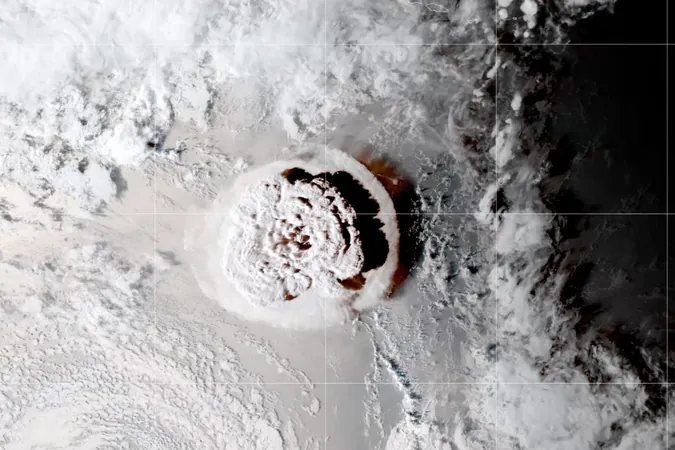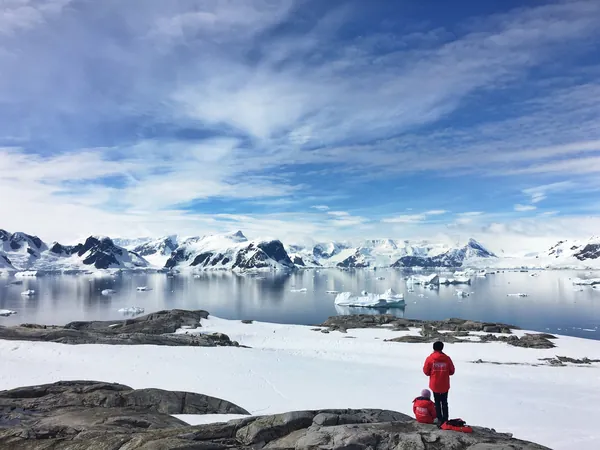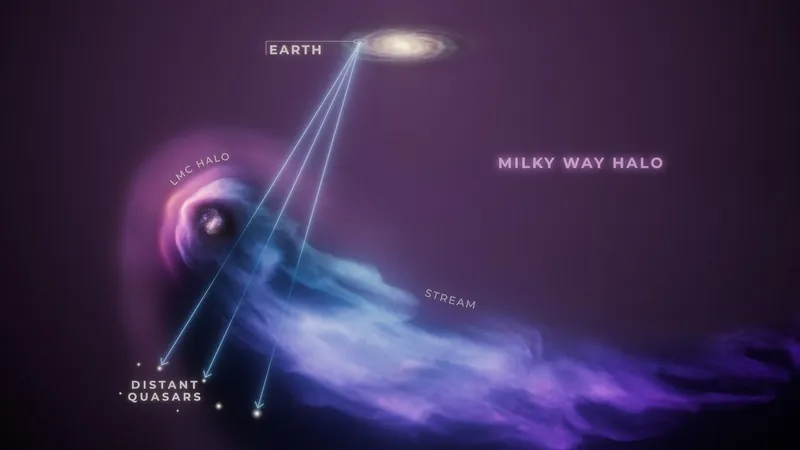
The Shocking Discovery Before the 2022 Tonga Eruption: A New Era in Volcanic Warning Systems?
2024-11-05
Author: William
Introduction
In a staggering event on January 15, 2022, the Hunga Tonga-Hunga Haʻapai volcano erupted with unprecedented ferocity, obliterating the island it was named after, forcing mass evacuations, covering Tonga in thick layers of ash, and resulting in several tragic fatalities. Predicting such volcanic disasters has always posed a significant challenge for scientists, but groundbreaking research has recently revealed that certain volcanoes might emit critical warning signals just moments before catastrophe strikes.
Discovery of Seismic Signals
A team of researchers delving into previously ignored seismic data has made a remarkable finding: the colossal eruption was preceded by a seismic wave that traversed the Earth's surface. This data, recorded by seismometers situated as far as 466 miles (750 kilometers) away in Fiji and the little-known island of Futuna, highlighted a specific type of surface-traveling seismic wave, known as a Rayleigh wave, that appeared roughly 15 minutes prior to the eruption. While these waves were beyond human perception, they were certainly picked up by sophisticated seismic monitoring equipment.
Importance of Early Warnings
“Early warnings are pivotal for mitigating disaster impacts,” emphasized Mie Ichihara, a volcanologist from the University of Tokyo and co-author of the study. “Island volcanoes can generate tsunamis, posing significant hazards to nearby populations.” Historically, nature has provided various warning signs ahead of catastrophic events, but the challenge lies in deciphering these clues.
Potential for Monitoring Improvements
The recent findings pave the way for potential changes in volcanic monitoring systems globally. Researchers point out that conventional methods employed for assessing earthquakes—utilizing seismic waves such as Rayleigh waves—could also be adapted for volcanic events. Unfortunately, there is currently no established infrastructure to harness these waves as early warnings for impending eruptions.
Geophysical Insights
Published in Geophysical Research Letters, the findings suggested that a fracture in the oceanic crust beneath the volcano triggered the Rayleigh wave detected in distant seismometers. This geological rupture allowed magma and seawater to flow into the volcano's magma chamber, resulting in catastrophic land subsidence and the eruption itself.
The Aftermath of the Eruption
The Hunga Tonga-Hunga Haʻapai explosion not only produced the tallest volcanic plume ever recorded, reaching an astonishing height of 36 miles (58 kilometers) within just half an hour, but it also highlighted the urgent need for advanced warning systems. The previous record-holder for height, the 1991 Mount Pinatubo eruption, now takes a backseat to this monumental occurrence that could have been far more devastating had it occurred in a more densely populated region.
Innovations in Disaster Prediction
Moreover, researchers are actively exploring more innovative ways to predict natural disasters. For instance, in 2021, scientists unveiled a method of tsunami prediction based on the detection of magnetic fields, offering a fresh approach that could redefine disaster readiness.
Future Implications
The potential implications of the Rayleigh wave discovery are enormous. "Next time a significant underwater eruption occurs, local observatories may be able to detect it in real time using this analysis," Ichihara noted optimistically. As we stand at the cusp of a new era in natural disaster detection, the lessons learned from the Tonga eruption are essential for safeguarding life in the face of future geological upheavals.
Conclusion
Could these groundbreaking findings revolutionize how we approach volcanic eruptions and save countless lives in the process? Only time will tell.









 Brasil (PT)
Brasil (PT)
 Canada (EN)
Canada (EN)
 Chile (ES)
Chile (ES)
 España (ES)
España (ES)
 France (FR)
France (FR)
 Hong Kong (EN)
Hong Kong (EN)
 Italia (IT)
Italia (IT)
 日本 (JA)
日本 (JA)
 Magyarország (HU)
Magyarország (HU)
 Norge (NO)
Norge (NO)
 Polska (PL)
Polska (PL)
 Schweiz (DE)
Schweiz (DE)
 Singapore (EN)
Singapore (EN)
 Sverige (SV)
Sverige (SV)
 Suomi (FI)
Suomi (FI)
 Türkiye (TR)
Türkiye (TR)